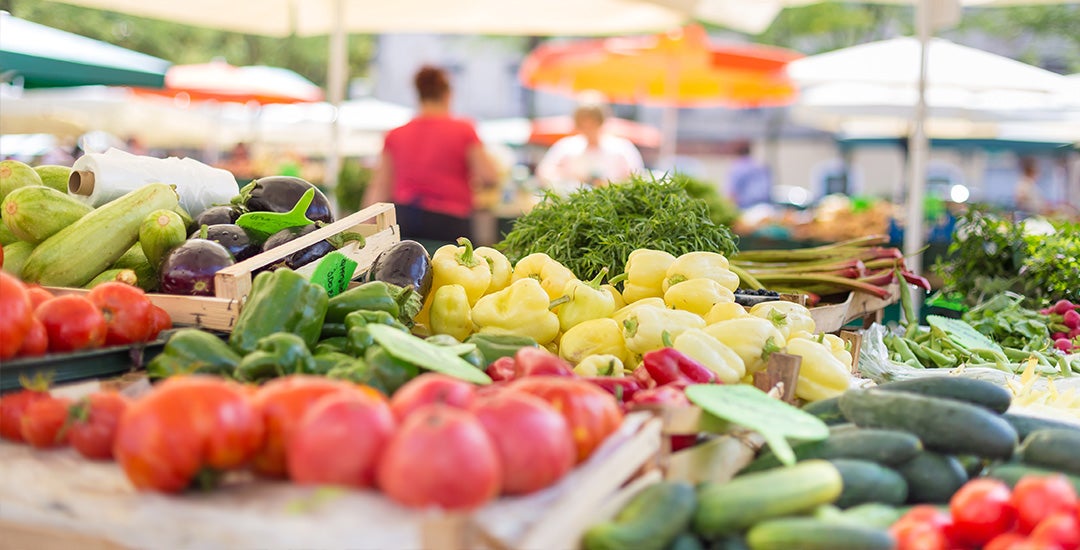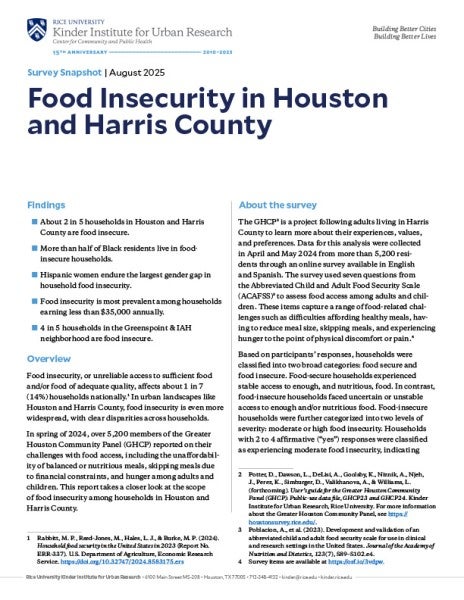Food insecurity, or unreliable access to sufficient food and/or food of adequate quality, affects about 1 in 7 (14%) households nationally. In urban landscapes like Houston and Harris County, food insecurity is even more widespread, with clear disparities across households.
In spring 2024, over 5,200 members of the Kinder Institute's Greater Houston Community Panel reported on their challenges with food access, including the unaffordability of balanced or nutritious meals, skipping meals due to financial constraints and hunger among adults and children. This snapshot takes a closer look at the scope of food insecurity among households in Houston and Harris County.
Key findings
- Thirty-nine percent of Houston and Harris County households are food insecure, significantly exceeding the national average of 14%.
- Household food insecurity is highest among Black (53%) and Hispanic (47%) residents, as well as households earning less than $35,000 annually (59%).
- Hispanic women endure the largest gender gap in household food insecurity.
- Seven out of 30 Harris County neighborhoods have more than 50% of residents experiencing moderate or high household food insecurity. Of note is the Greenspoint & IAH neighborhood, where about 4 in 5 households are food insecure.






